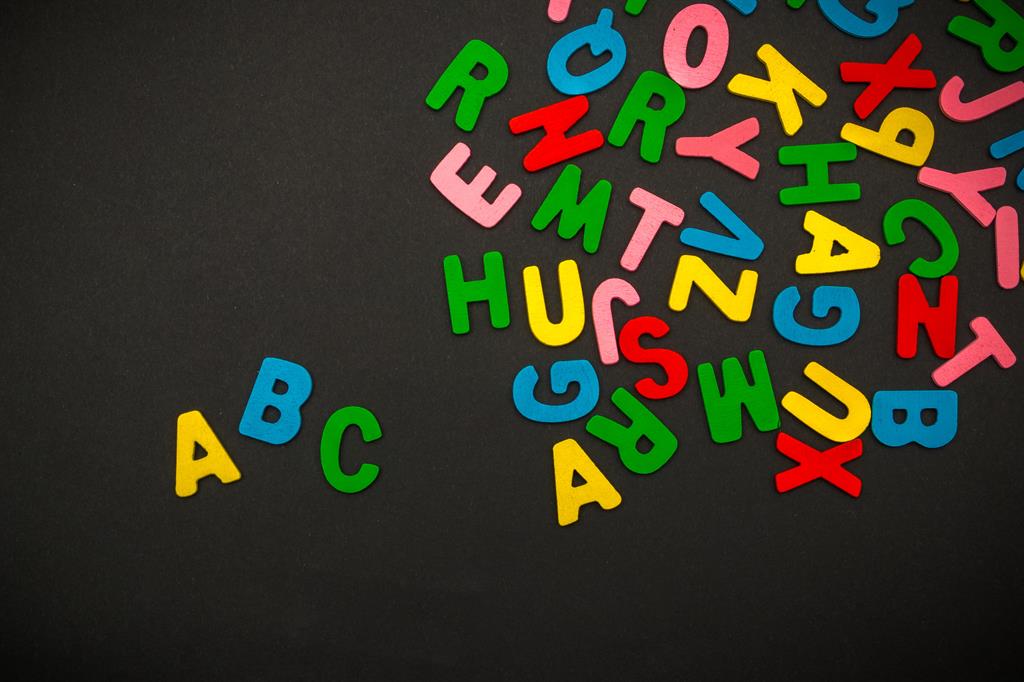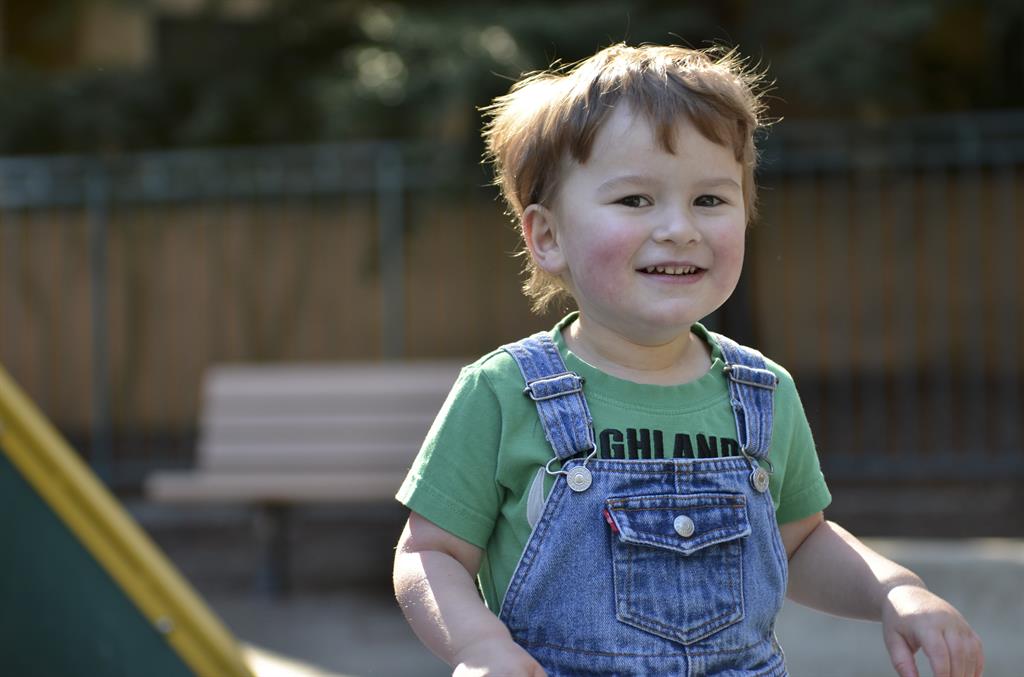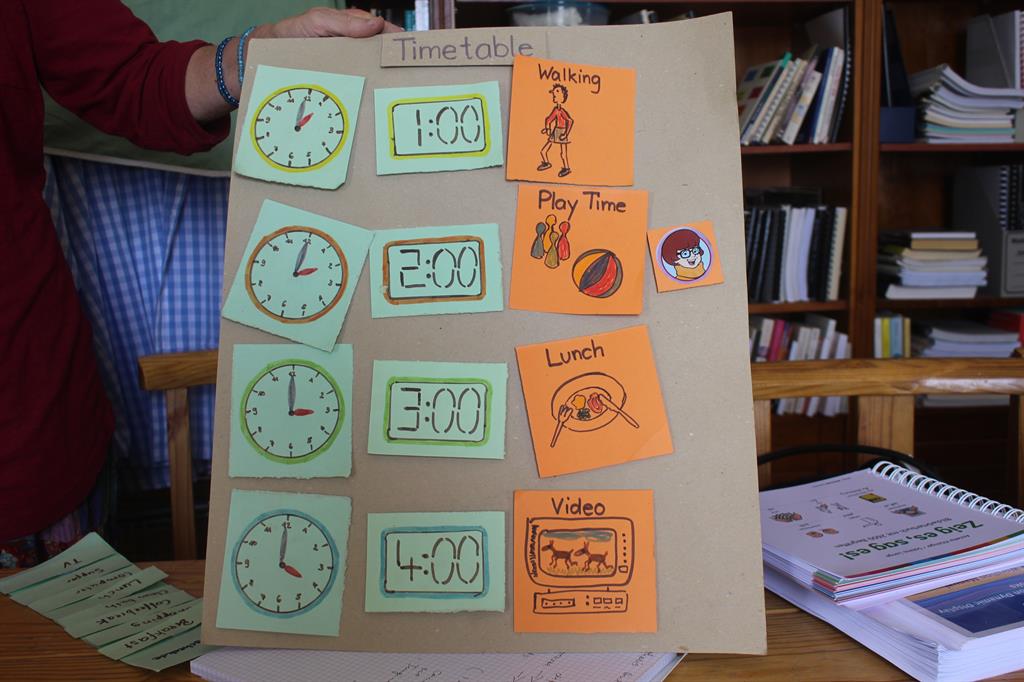More than a diagnosis
Autism awareness strives to help people understand that it is not an illness or disease which can be cured, but with the right support, it can be managed.
Mariselle Stofberg
Autism teaches us that love and showing love do not always need words. Sometimes, being there and caring is enough.
Autism is a lifelong developmental condition that affects how people perceive the world and interact with others.
Autism, or autism spectrum disorder (ASD), refers to a broad range of conditions characterised by challenges with social skills, repetitive behaviours, speech and non-verbal communication.
Autism is measured on a spectrum, which means it can take on various forms. “Many people are under the impression that this scale indicates more severe cases of autism and some that are less severe. In reality, there is no ‘more or less’ with autism, just different forms,” said Petra Dillmann, the co-ordinator of the Autism Association of Namibia and the Special Needs Network.
The signs
While some parents only notice signs of autism when their child starts attending school, sometimes autism can become visible from as early as six months old.
The most evident sign is a lack of interaction with others.
“Babies may show delays in verbal development and social connection with others. In older children, parents sometimes notice that the child prefers to keep their own company and fixate on a specific method of play with a specific object. Parents often report strange behaviours or regular incidents of aggression or rage,” said Dr Anina du Toit, a clinical psychologist at Let’s Talk Psychology.
Diagnosing ASD
Autism is diagnosed based on observation by a diagnostician or team of diagnosticians (e.g. a neuropsychologist, psychologist, psychiatrist, licenced clinical social worker, etc.).
Families who live with a person with autism are encouraged seek the help of professionals to assist them in coping with the demands of living with autism.
The Autism Association of Namibia is an organisation that promotes the well-being of persons with ASD and provides support and assistance to parents and individuals who live with autism.
Finding what works for you
Dillmann emphasised that every autistic person experiences different challenges and difficulties. “Because people are different, they have different methods or techniques that help them. The challenge is to, through trial and error, establish which method works for you and your family.
“It is important to work together as a team,” she added.
Speech problems
“Many parents come to our centre because their child does not speak or seems to have lost their speech. Be aware that this does not mean that the child does not understand what is being said. They mostly understand everything. Even if they do not speak, they will be communicating: Through gestures, facial expressions, body language and behaviour.
“Behaviour is always a form of communication,” Dillmann said.
It is important to involve a speech therapist who can do a proper assessment to rule out speech disorders, and to guide the family on how enhance speech development, she said.
“Some children will learn to speak or regain their speech, while others will need extra assistance through Augmentative and Alternative Communication boards or devices. Ordinary speech is always faster, so people do not need to fear that they won’t try and speak if they have a board or device,” she added.
There are various ways in which language development can be promoted:
1. Some children go mute or seem zoned out when anxious or stressed. Put yourself in their shoes and see the world through their eyes to focus on their non-verbal communication.
2. Many autistic children do not spontaneously imitate. They must be taught to imitate. This is done by imitating their words, utterances, behaviour or actions, like moving your hands like they do, jumping up and down when they do, singing when they do.
3. Although the child does not speak, you should continue to speak to and with them and teach through play, e.g. interactive play, turn-taking and singing. Use their interest to start off with, slowly introducing other toys or actions.
4. Use basic language in the form of short phrases as you go. Name objects and verbalise your actions so that the child can follow instructions and directions more easily.
5. Have patience. Wait for your child to act and react. Give them time to take in the information and to respond.
6. Communication development can be greatly enhanced and improved with the use of visual support strategies and assistive devices like communication boards or apps or speech devices.
Toilet training
Many parents report that they have difficulty with toilet training for their autistic child.
The speed at which children learn also has to do with their sensory system. “Some autistic children seem not to be aware regarding when they need to go. A nappy is ‘safe’ and ‘comfortable’, and to suddenly have to sit on a potty or a toilet can be overwhelming.
“Not every toilet looks the same, and some children need to be taught that a toilet with a wooden seat is the same as a toilet with a black seat. Use visual schedules to remind them of the sequence of actions when going to the toilet or bathroom,” Dillmann said.
Picky eating
“Possibly the familiarity of the colour and blandness of baby foods are partially to blame for autistic children not wanting to try new foods. Before anything, your general practitioner should rule out gut issues or allergies. If the child happens to want to eat a lot of non-foods, like chewing on iron rods or wanting to eat sand and stones, maybe the child is mineral deficient and might need a supplement,” Dillmann said.
She further added that some children have a very sensitive system when it comes to taste and texture of food and will not eat something if it is too spicy, sour or has a lumpy texture. They often also have a fear (not only when it comes to eating) about anything new or unfamiliar.
“Parents should introduce differently textured foods and drinks as soon as they can safely do so. Most children go to some form of picky eating between the ages of one and six. Children with autism just take longer and might need some assistance in overcoming food aversions or to become more flexible about food.”
Some tips Dillmann has for picky eaters:
· Don’t pressure the child to eat.
· Eating and drinking happens at the table. No food in between meals.
· Introduce new foods slowly and allow the child to get used to them.
· Give your child the opportunity to try new foods, but don’t force it on them. Children will eat when they are hungry.
· Do not get into power struggles regarding eating or food.
· Some autistic children who are deficient in minerals and essential nutrients and will need supplementation. Parents should discuss specific autism diets or supplementation with their doctor or a dietician who is knowledgeable about autism.
Autism teaches us that love and showing love do not always need words. Sometimes, being there and caring is enough.
Autism is a lifelong developmental condition that affects how people perceive the world and interact with others.
Autism, or autism spectrum disorder (ASD), refers to a broad range of conditions characterised by challenges with social skills, repetitive behaviours, speech and non-verbal communication.
Autism is measured on a spectrum, which means it can take on various forms. “Many people are under the impression that this scale indicates more severe cases of autism and some that are less severe. In reality, there is no ‘more or less’ with autism, just different forms,” said Petra Dillmann, the co-ordinator of the Autism Association of Namibia and the Special Needs Network.
The signs
While some parents only notice signs of autism when their child starts attending school, sometimes autism can become visible from as early as six months old.
The most evident sign is a lack of interaction with others.
“Babies may show delays in verbal development and social connection with others. In older children, parents sometimes notice that the child prefers to keep their own company and fixate on a specific method of play with a specific object. Parents often report strange behaviours or regular incidents of aggression or rage,” said Dr Anina du Toit, a clinical psychologist at Let’s Talk Psychology.
Diagnosing ASD
Autism is diagnosed based on observation by a diagnostician or team of diagnosticians (e.g. a neuropsychologist, psychologist, psychiatrist, licenced clinical social worker, etc.).
Families who live with a person with autism are encouraged seek the help of professionals to assist them in coping with the demands of living with autism.
The Autism Association of Namibia is an organisation that promotes the well-being of persons with ASD and provides support and assistance to parents and individuals who live with autism.
Finding what works for you
Dillmann emphasised that every autistic person experiences different challenges and difficulties. “Because people are different, they have different methods or techniques that help them. The challenge is to, through trial and error, establish which method works for you and your family.
“It is important to work together as a team,” she added.
Speech problems
“Many parents come to our centre because their child does not speak or seems to have lost their speech. Be aware that this does not mean that the child does not understand what is being said. They mostly understand everything. Even if they do not speak, they will be communicating: Through gestures, facial expressions, body language and behaviour.
“Behaviour is always a form of communication,” Dillmann said.
It is important to involve a speech therapist who can do a proper assessment to rule out speech disorders, and to guide the family on how enhance speech development, she said.
“Some children will learn to speak or regain their speech, while others will need extra assistance through Augmentative and Alternative Communication boards or devices. Ordinary speech is always faster, so people do not need to fear that they won’t try and speak if they have a board or device,” she added.
There are various ways in which language development can be promoted:
1. Some children go mute or seem zoned out when anxious or stressed. Put yourself in their shoes and see the world through their eyes to focus on their non-verbal communication.
2. Many autistic children do not spontaneously imitate. They must be taught to imitate. This is done by imitating their words, utterances, behaviour or actions, like moving your hands like they do, jumping up and down when they do, singing when they do.
3. Although the child does not speak, you should continue to speak to and with them and teach through play, e.g. interactive play, turn-taking and singing. Use their interest to start off with, slowly introducing other toys or actions.
4. Use basic language in the form of short phrases as you go. Name objects and verbalise your actions so that the child can follow instructions and directions more easily.
5. Have patience. Wait for your child to act and react. Give them time to take in the information and to respond.
6. Communication development can be greatly enhanced and improved with the use of visual support strategies and assistive devices like communication boards or apps or speech devices.
Toilet training
Many parents report that they have difficulty with toilet training for their autistic child.
The speed at which children learn also has to do with their sensory system. “Some autistic children seem not to be aware regarding when they need to go. A nappy is ‘safe’ and ‘comfortable’, and to suddenly have to sit on a potty or a toilet can be overwhelming.
“Not every toilet looks the same, and some children need to be taught that a toilet with a wooden seat is the same as a toilet with a black seat. Use visual schedules to remind them of the sequence of actions when going to the toilet or bathroom,” Dillmann said.
Picky eating
“Possibly the familiarity of the colour and blandness of baby foods are partially to blame for autistic children not wanting to try new foods. Before anything, your general practitioner should rule out gut issues or allergies. If the child happens to want to eat a lot of non-foods, like chewing on iron rods or wanting to eat sand and stones, maybe the child is mineral deficient and might need a supplement,” Dillmann said.
She further added that some children have a very sensitive system when it comes to taste and texture of food and will not eat something if it is too spicy, sour or has a lumpy texture. They often also have a fear (not only when it comes to eating) about anything new or unfamiliar.
“Parents should introduce differently textured foods and drinks as soon as they can safely do so. Most children go to some form of picky eating between the ages of one and six. Children with autism just take longer and might need some assistance in overcoming food aversions or to become more flexible about food.”
Some tips Dillmann has for picky eaters:
· Don’t pressure the child to eat.
· Eating and drinking happens at the table. No food in between meals.
· Introduce new foods slowly and allow the child to get used to them.
· Give your child the opportunity to try new foods, but don’t force it on them. Children will eat when they are hungry.
· Do not get into power struggles regarding eating or food.
· Some autistic children who are deficient in minerals and essential nutrients and will need supplementation. Parents should discuss specific autism diets or supplementation with their doctor or a dietician who is knowledgeable about autism.











Kommentaar
Republikein
Geen kommentaar is op hierdie artikel gelaat nie